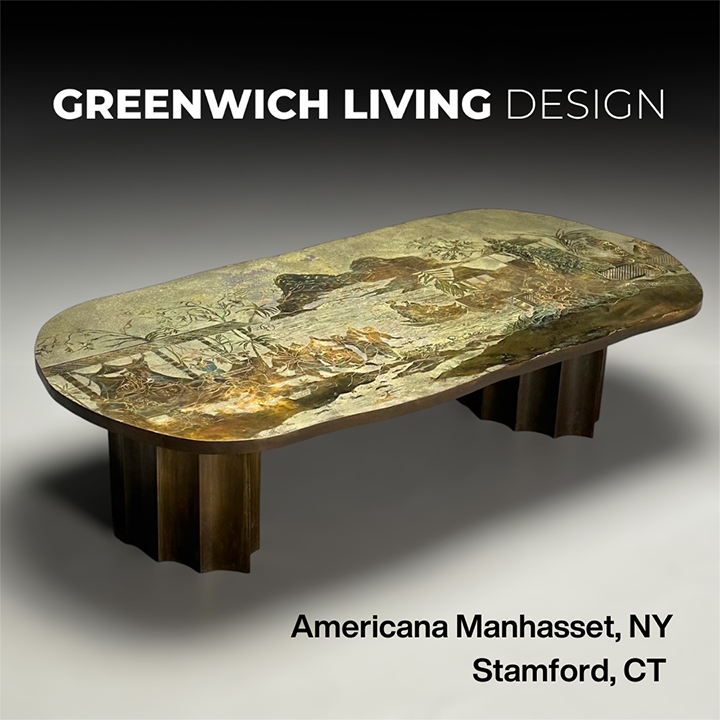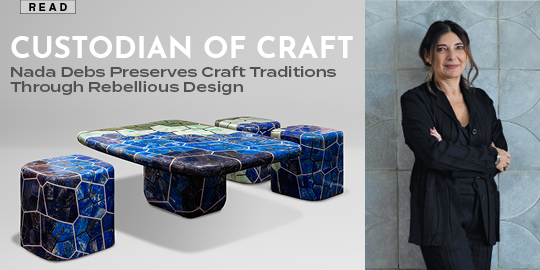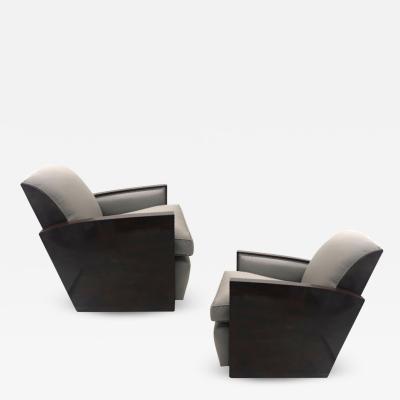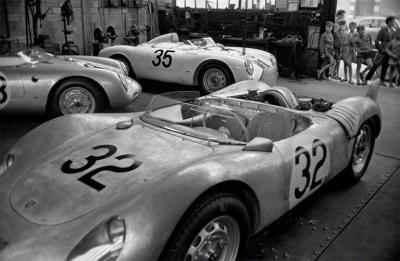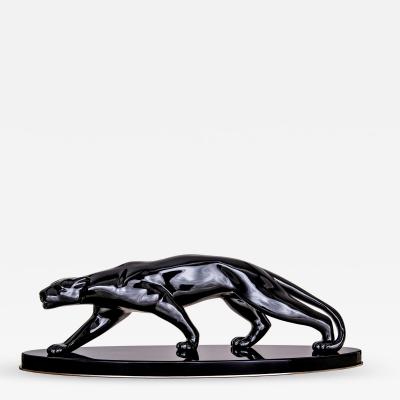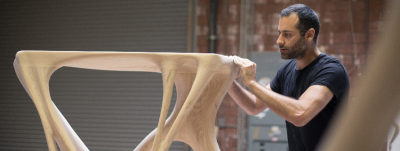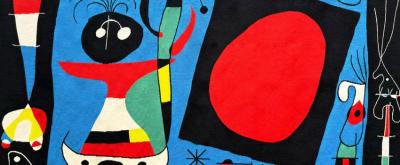Art on Two Wheels
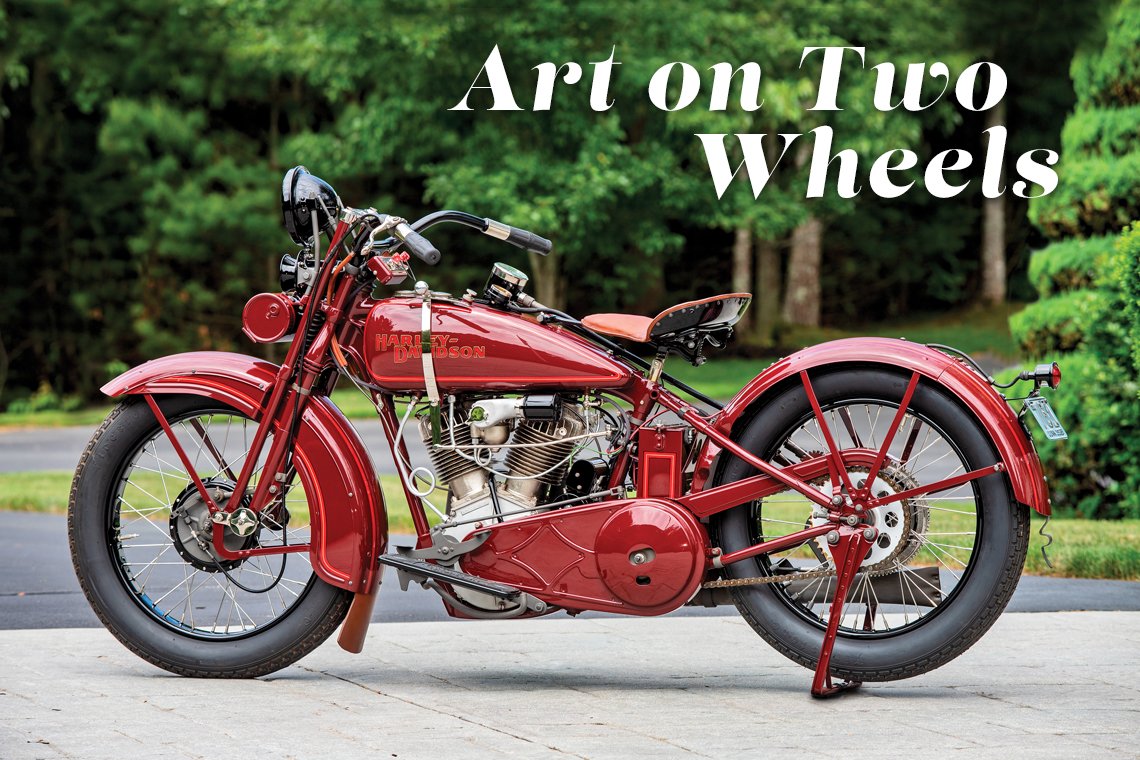 |
The 1928 Harley-Davidson Two Cam is one of McGraw’s favorite bikes. New from the dealer its speed was 85 mph, an unheard-of speed at the time; with a few adjustments, it could hit 100 mph. The bike was soon outlawed for racing because it could beat the newer bikes. |
 | |
David McGraw pictured on a 1980 Harley-Davidson Captain America amidst his collection. Captain America was one of the most iconic choppers in the 1960s, made popular in Easy Rider. This example was built for the sequel. |
September 21 – November 24, 2019
Opening reception, Friday, September 20
Cultural Center of Cape Cod
307 Old Main Street, South Yarmouth, MA
Tickets $10; opening reception $50
For information, call 508.394.7100
or visit www.cultural-center.org
This fall, the Cultural Center of Cape Cod will be filled with an extraordinary exhibit of Harley-Davidson motorcycles and motorcycle art from the collection of David McGraw, who has worked for decades to acquire and restore iconic Harleys and other fine machines. The exhibit will open with a special event, “Leather and Lace,” on Friday, September 20.
“We’ve hosted hundreds of amazing exhibits since we opened in 2007,” says the Center’s Executive Director Robert Nash, “but this one will take the cake. We can’t wait to open our doors to people from all over the world who love motorcycles and see them as beautiful examples of ingenuity, artistic design, and America’s love of the open road.” The exhibit will feature dozens of rare and unusual bikes, including a 1915 K Board Tracker, 1927 Pea Shooter, 1927 Hill Climber, 1928 JDH, 1936 EL Knucklehead, 1949 Flat Track, 1950 Panhead, 1966 CRS Scrambler, 1967 XLRT Lance Weil, 1968 Drag Bike, 1970 XRTT 750 Daytona Roadracer, 1970 XLCH Land Speed Streamliner, a 2005 Destroyer Drag Bike, and many others.
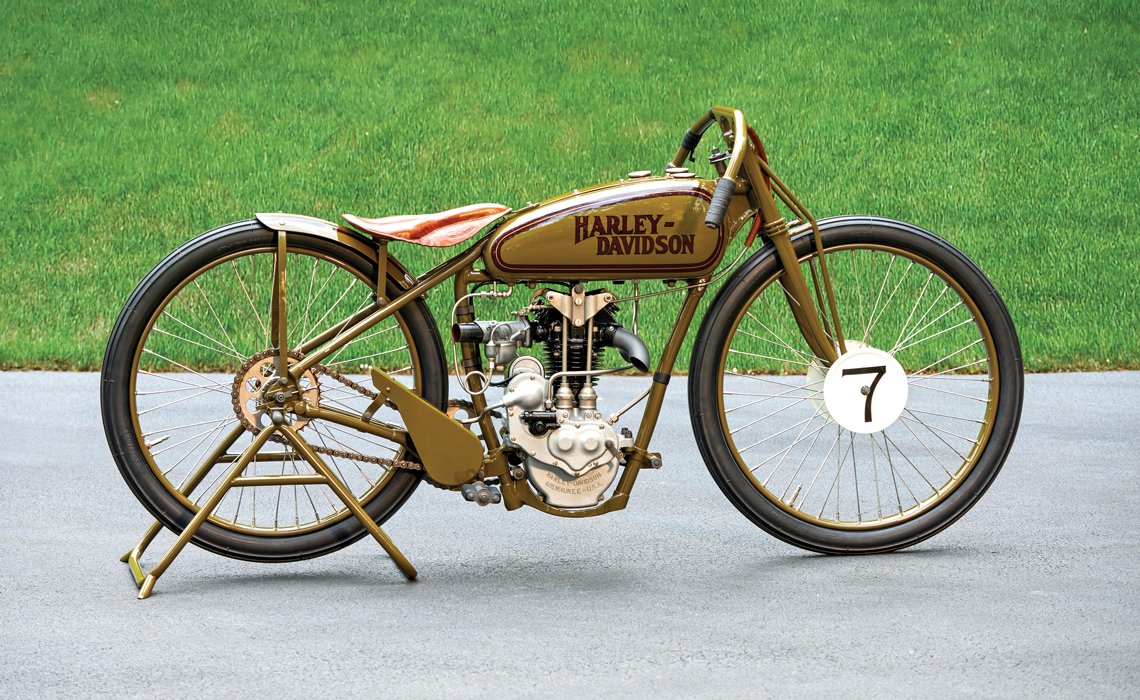 | 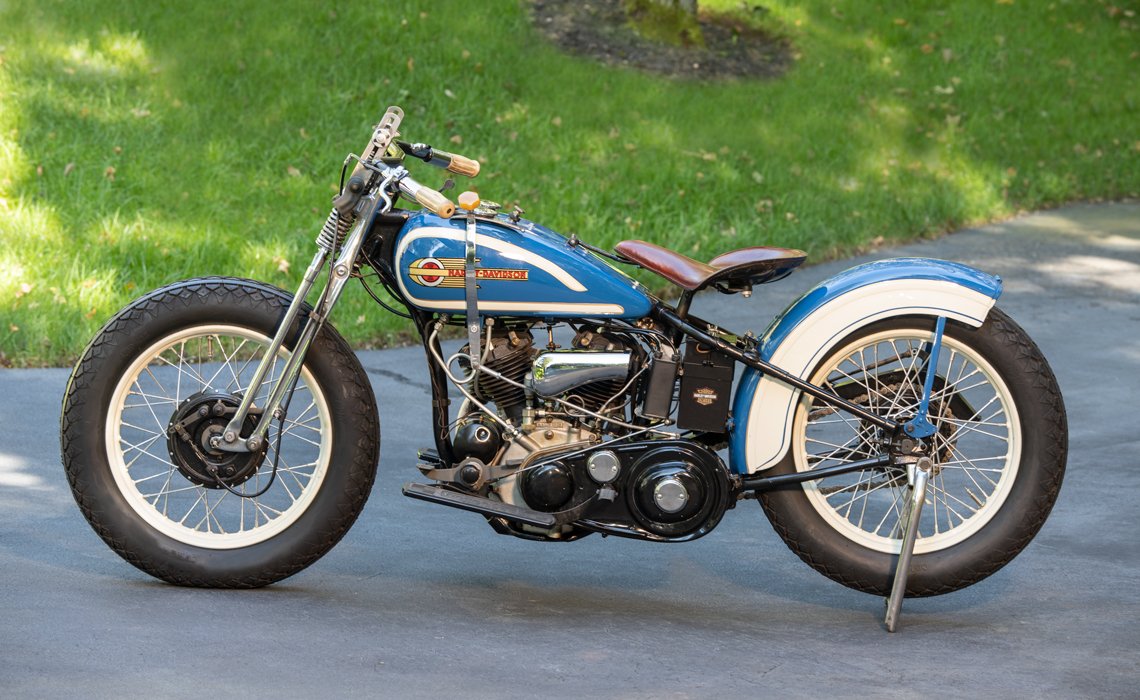 | |
left: Harley-Davidson made this bike for only one year. It’s called a Pea Shooter because it has a single cylinder engine that pops when it runs. Harley stopped making single cylinder bikes in 1917 or ’18, and the 1926 model marks their return to single cylinders. This bike has Harley’s first true overhead valve motor. It is a 350CC, capable of going 80 mph, and intended strictly for board track racing, so it has just one gear, no clutch, and no brakes. Just a kill switch. (If someone hit the brakes in a race, the entire pack could go down.) The first Harleys were black. Then came the Silent Grey Fellows. Then, in 1917, this green. Harley did not have optional colors until 1928. Everything on this bike is original except the tires, which are reproduction but accurate. Every nut and bolt is original and right. It has a one-year-only frame and tank. So it’s a very rare bike. right: The 1936 Harley-Davidson RLDR represents the start of Class C racing: a new generation of bike to attract more people to racing. Class C had a limit of 750 CCs and was designed so a rider could drive the bike to the track, take off the headlight and other superfluous features, race the race, put the street trim back on, and go home. This is the way it would have looked when it raced. Harley made these only in ‘35 and ’36, so it’s very rare today. This bike would have raced at Daytona—on the beach, way back when. | ||
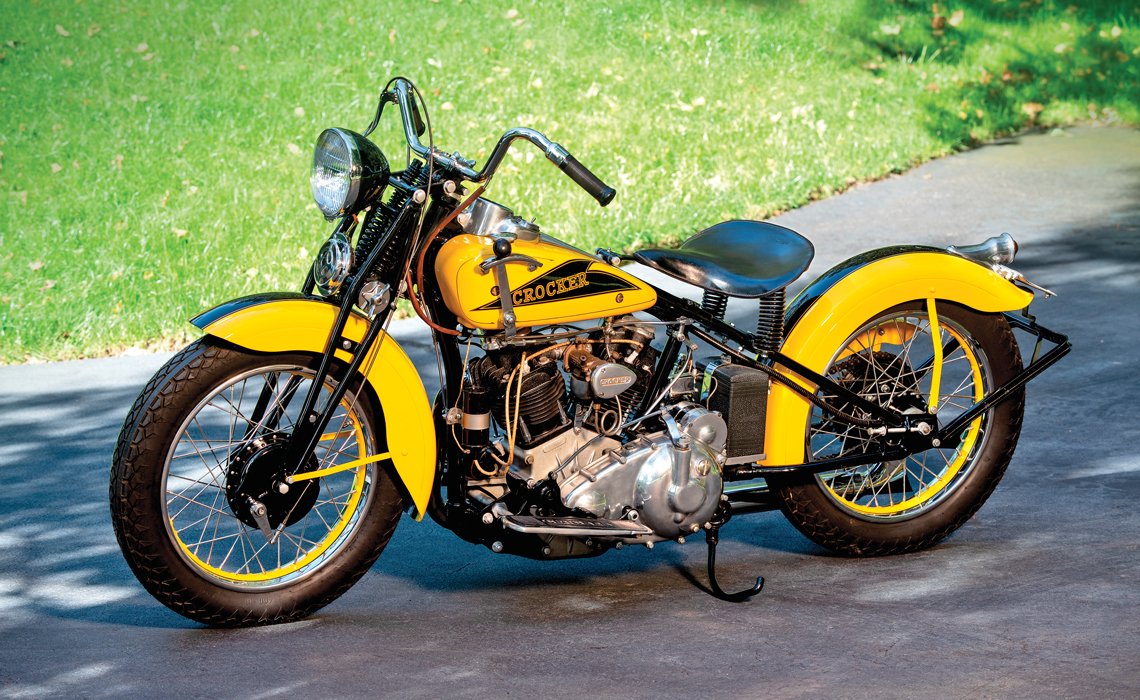 |
This Crocker is one of the rarest in McGraw’s collection It was built in California by Al Crocker, who completed about sixty of them before Harley pursued him for patent infringement. His bikes were very advanced, each one made to order. If a stock Harley beat one of his bikes, he would buy the Crocker back for whatever the customer had paid. It’s the most sought-after ‘30s American bike there is. It looks like it was modified, like other bobbers, but this is exactly the way it was manufactured for the original buyer. |
The first bike he purchased was a 1928 Harley “two cam.” Says McGraw, “That one bit me, and I started restoring them. I usually work on four to five motorcycles at once, and it takes me years sometimes to finish a bike.” When he’s restoring a bike, McGraw is both methodical and thorough. “When I find enough parts, I amass everything I need to assemble the bike … but before I restore it I fit everything, do the body work, then take it all apart, clean it up, paint and polish, do the plating, and then put it all together again.”
Taking his father’s suggestion “to pick one thing and try to be a little distinctive,” McGraw says he chose racing machines because “they have a history and they’re hard to find because they’re usually thrown away.” He is focusing on collecting the full era, from start until now, of Harley race bikes. When asked if he’s missing anything, McGraw smiles. “There’s one that’s called the 8-valve Harley, which is the Holy Grail. Don’t have one of those [yet].”
Likewise, the artwork and memorabilia on the walls during Art on Two Wheels is from a collection McGraw assembled with great care and patience. “All the artwork, with the exception of a few things, is original.” The results are incredible and include a cornucopia of paintings, posters, signs, and artifacts.
 |
| This is a hill climber, available originally to Harley-Davidson’s factory racers. The motor is plated in the frame, so it’s integral and sets the motor low to achieve the lowest possible center of gravity. The rear tire has chains for traction because knob tires didn’t exist in 1927. This bike is in original condition with the exception of the paint job and the front tire, which exploded when McGraw was riding it. He decided not to restore this bike because it’s so difficult to find a complete bike that looks the way it did the last time it raced. |
 |  | |
| left: A Californian named Lance Weill won 45 races on this bike in England. McGraw found it as just the frame, which is actually three different Harley frames put together. It has a larger engine—833CC, known as a “900”—which was allowed in English racing but not in the U.S., where the limit was 750CC. McGraw spent four years restoring it with all original parts, including the tires. Like all his bikes, it is entirely authentic. right: Also known as the Big Twin, this classic police bike this was the biggest of the era, with all the accessories, including the windshield, accessory bags, and the single seat, which made it more comfortable for touring. This bike has not been restored, though McGraw has refined it for personal riding. | ||
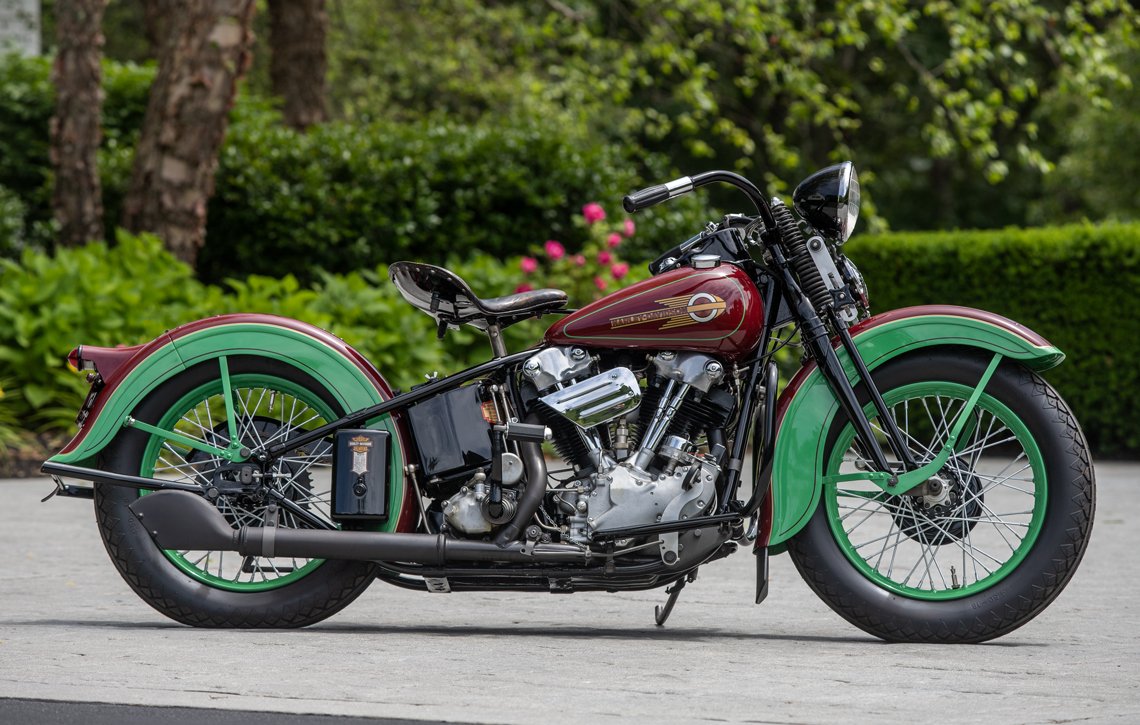 |
| This knucklehead was Harley-Davidson’s first true overhead valve street bike, with a new motor and frame, wheels and brakes, and several features never seen on a Harley before, such as 4-speed transmission and the incorporation of speedometer, instruments, and ignition switch on the dash. This is the Holy Grail of early Harleys. It set the styling for Harleys until today. This bike came from North Carolina and restored by Myron Pace. It is shown here with its portrait, painted by the famous motorcycle artist Scott Jacobs, who had never, before this work, painted a locomotive. It took him four attempts to get it right. |
| David McGraw knows of only two of these in early board trackers existence, the other a 1915 model. Harley-Davidson raced this type of single-cylinder motorcycle to slow racing down and prevent the frequency and severity of injuries associated with the bigger motors. Since the ’16 was lighter, it was still a great racing machine. McGraw acquired this bike from Daniel Statnekov. Brad Wilmarth did the restoration. |
 |  | |
| left: 1978 was the last year of Italian Harleys like this one. Right after that, they sold their Italian factory to Cagiva. So this bike is truly rare. And totally originally. Harley allegedly brought in only fifteen SX350 engines, and this bike is serial #15. It’s a prototype of the “off-on” bike, a streetable machine that can still go in the woods. McGraw now has the prototype Enduro bike and the prototype motocross bike and is will soon complete the restoration of the prototype flat track bike. right: TT stands for Tourist Trophy, a type of racing defined as left and right turns with jumps, but in the early days the bikes didn’t have the kind of suspension needed for jumps. This bike is made for Daytona, and Langhorne, PA, and Oakland, CA –—the 200-mile races — so it carries five gallons of fuel and six quarts of oil, while street bikes usually carry three and a half gallons of fuel and three quarts of oil. The motor runs on ball bearings instead of bushings, so it’s much higher revving with less friction than a street bike. And it has Magneto ignition instead of battery ignition. It does have brakes. It probably went 100 mph, so they needed brakes to be able to make the corners. | ||
| 1969 was the last year of the KR flathead motor. This was a highly successful bike. The 1970 model had so many problems that most racers went back to their KRs for the ’70 season. This bike was owned by a famous mechanic and racer named Harold Boyajian, otherwise known as the Houdini of motorcycle mechanics. He could tell what was wrong with a bike just by listening to it and could fix anything. McGraw acquired this bike from his widow and restored it. She memorialized him with the inscription on the bike: “How wonderful the heart of a machine could so fill the heart of a man.” |
 |
| This machine is the sister ship to the machine and almost identical to the one that broke the land speed record at Bonneville salt flats, reaching 265mph with a very small Sportster 83CC motor. Quite a feat for the time. There are only about six Streamliners known to exist. After 1970, they outlawed this style of streamliner because the pilot couldn’t see out the front, relying instead on a black stripe on the track that was visible from the side. To stop the Streamliner, the pilot had to kill the fuel—which was nitro methane—because it would otherwise continue to run on friction and combustion. A parachute was necessary to slow it down. Each of the Streamliners was custom-built to fit the very small pilot. This machine is in its original condition. Untouched. |
 |  | |
| left: 1915 Harley-Davidson Board Tracker. David McGraw knows of only two of these in early board trackers existence, this is the 1915 model. Harley-Davidson raced this type of single-cylinder motorcycle to slow racing down and prevent the frequency and severity of injuries associated with the bigger motors. right: 1978 was the last year of Italian Harleys like this one. Right after that, they sold their Italian factory to Cagiva. So this bike is truly rare. And totally originally. Harley allegedly brought in only fifteen SX350 engines, and this bike is serial #15. It’s a prototype of the “off-on” bike, a streetable machine that can still go in the woods. McGraw now has the prototype Enduro bike and the prototype motocross bike and is will soon complete the restoration of the prototype flat track bike. | ||
 |  | |
| left: This is one of the first bikes McGraw ever built from scratch. He built it 1980 with a 1980 80 cubic inch motor. He styled it after the Crocker, but it’s his interpretation, with all Harley parts except the custom frame. It’s such a favorite that he rode it to his wedding. right: This model was designed to going in the woods. Enduro racing involved racing from point A to point B while averaging 25 mph. Riders had point deducted for finishing either early or late. So this bike has a speedometer, a trip meter, a clock, and a route sheet. Harley made only about ten of these in 1954, its 50thanniversary year, with several new features: a racing saddle; shocks, exhaust, and crash bar unique to this model; a skid plate, military oil bath air filter, and “snorkel tube” breather to enable immersion up to the steering neck. A unique bike. It took McGraw four years to restore this bike. | ||
 |
| This bike was made for just one year and was designed for hunting, fishing, and sporting. Not a streetable bike, it was strictly for trails in the woods. McGraw acquired this Ranger from an actual forest ranger in Yellowstone National Park who had rigged an elaborate system for towing whatever he hunted, including elk. It’s light and easy to maneuver, with plenty of power if not speed. McGraw completely restored this bike, but even the tires are original. |
Lauren Wolk is associate director at the Cultural Center of Cape Cod.
This article was originally published in the Autumn 2019 issue of Antiques & Fine Art magazine, a fully digitized version of which is available at www.afamag.com. AFA is affiliated with Incollect.com.
The exhibition will be held at the Cultural Center of Cape Cod, 307 Old Main Street, South Yarmouth, MA, and opens September 21 and extends through November 24, 2019; there is an opening reception on Friday, September 20. Tickets $10; opening reception $50 . For information, call 508.394.7100 or visit www.cultural-center.org




